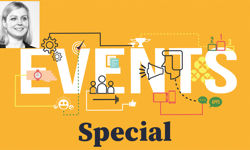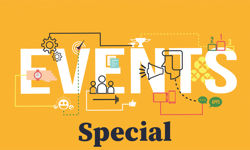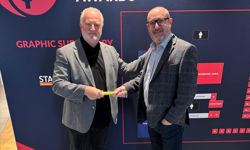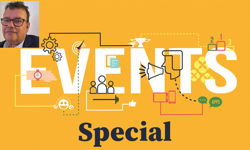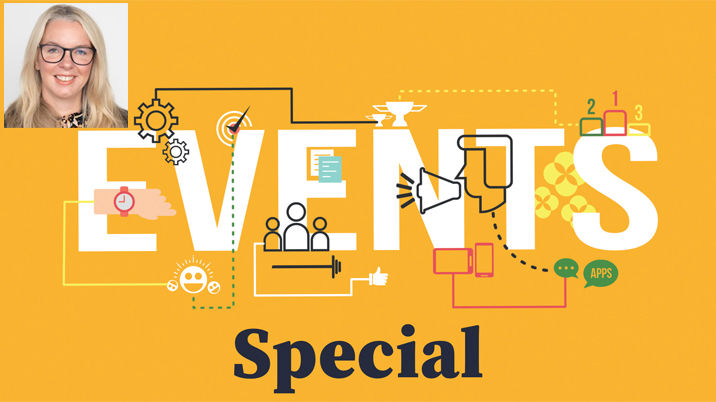
Q: What is best practice now?
A: At emap, we’ve really fine-tuned our approach to organising conferences, whether we’re talking about niche markets or larger industry gatherings. As the events landscape changes, so do our approaches. I’d like to share some key elements we focus on to ensure our conferences are not only financially successful, but truly meaningful for our attendees.
We begin by carefully scoping out the internal event plan before engaging a strong industry advisory panel. These panels are made up of influencers who help guide the event’s direction. Their insights ensure the content addresses the real challenges and opportunities within the industry. The most successful events feel like they have come straight from the heart of the industry.
And, of course, sponsors aren’t just financial backers for us — they’re genuine partners. Building strong relationships with them is crucial, and we get them involved early on so they are connected to the event. Their involvement goes beyond just financial support; they bring credibility, influence, and marketing power. The earlier we involve them and communicate openly and transparently, the more effective their contribution to the event’s success.
Webinars have also been an effective tool in the lead-up to our events and great for launches. They are fantastic for creating buzz and gauging what potential attendees are most interested in. This allows us to fine-tune the content ahead of the event. Webinars also help build engagement and community before the main event.
A powerful tool continues to be LinkedIn. It’s where our audience is, and we use it to engage with them, promote our events, and build a community around each conference. In a sense, LinkedIn helps extend the life of the conference beyond the event itself.
Conferences have changed since the pandemic; networking has become an even bigger focus. Delegates repeatedly tell us they aren’t just attending for the content — they come to build connections. So, offering a mix of structured and casual networking opportunities is key. To do this, we’ve introduced different formats like ‘campfire sessions’, where attendees can dig into industry topics in a more relaxed and interactive setting. As audiences have leaned towards more live networking experiences, we’ve scaled back our hybrid and virtual offerings and are focusing on enhancing the live experience.
Content is still key. Content curation at emap focuses on delivering actionable insights that directly address the needs of our audience. Continual feedback from our audience has shown that finding the sweet-spot between punchy content, and enriching networking activities has become essential to delivering the perfect event — if such a thing exists!
Finally, one thing that has always been clear to me is that a successful conference is more than just an event — it’s a reflection of the brand. In our division, where we manage leading brands like Property Week, it’s essential that every event we build aligns closely with the overall brand identity and values. Collaboration is essential — we work together with journalists, editors, and commercial teams to ensure the event feels like a true extension of the brand.
Q: How do you see it changing in the future?
A: The way we plan and execute conferences has evolved, and longer planning timelines are now essential. Where we once could manage with a 20-week cycle, we now plan a year in advance. This gives us the time needed to secure top speakers, build our advisory panel, and involve our sponsors early in the process.
We’ve also noticed a growing divide between niche and large-scale events. While some industries thrive on smaller, specialised gatherings, others require broader, more inclusive events. Understanding your audience’s specific needs is critical when deciding which approach is best suited for your industry.
Diversity and inclusion (D&I) and sustainability are no longer optional — they’re expected. Attendees want to see these principles reflected in everything, from the speaker line-up to the logistics. We’ve made D&I a cornerstone of our strategy, ensuring that underrepresented voices are given a platform. To further this, we’ve introduced dedicated events like our Women and Diversity and Rising Star programmes, designed to recognise and celebrate diverse perspectives.
One of the most exciting developments has been our use of AI. Within our Property Week portfolio, we’ve implemented AI to transcribe sessions in real-time, creating instant summaries that attendees can view live on screen. This makes the sessions more engaging and allows delegates to focus on the discussions. Looking ahead, AI will further personalise conference experiences.
We’ve also found great success by tying conferences to award ceremonies. Highlighting new award winners during our events adds excitement that elevates both the awards and the conference itself. This combination boosts attendance and creates a more memorable experience.
Finally, a successful conference is all about the people involved — your team, your contributors, and your partners. By building strong relationships and truly understanding your audience’s needs, you can create events that not only stand out but leave a lasting impact.
Three top tips
1. Plan a year in advance. An early start allows you to secure star speakers, sponsors, and advisory board members.
2. Be diverse and inclusive. Make sure your speaker line-up and networking opportunities reflect a broad and diverse audience.
3. Leverage technology. Use AI to enhance the overall conference experience.
Join Simone and the other contributors to our Events Special on Wednesday, 13 November for a Q&A webinar when you will have the opportunity to put questions to them.
This article was included in the Events Special, published by InPublishing in October 2024. Click here to see the other articles in this special feature.



